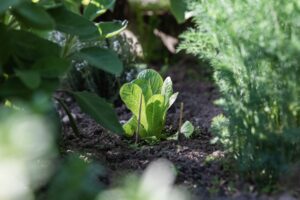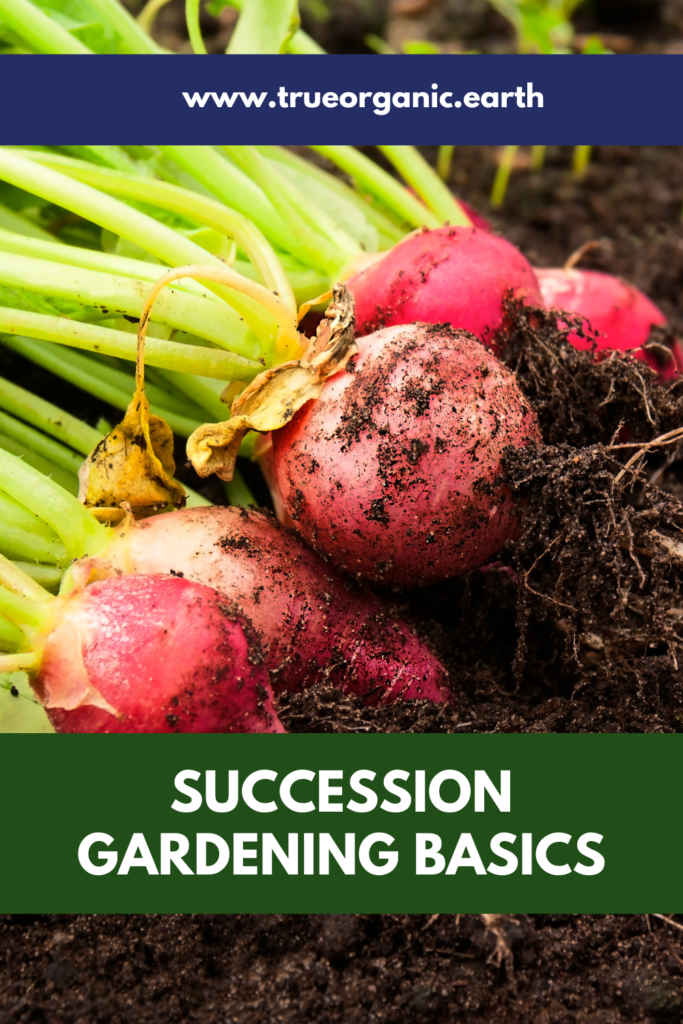August 4, 2023
Succession Planting: Maximize Your Garden’s Potential with Continuous Harvest
Succession Planting: Maximize Your Garden’s Potential with Continuous Harvest
Do you want to maximize your garden’s yield, grow a wider variety of crops, and reduce wasted food? You want to try succession planting!
Extend your growing season and grow more food with succession planting: staggered planting for extended harvest opportunities. With just a bit of extra planning and time in the soil, you’ll be cashing in on bountiful garden harvests from spring into late fall.
Let’s check out how succession works, its benefits, and some top tips for getting it started in your home garden.
What is Succession Planting?
Succession planting is the practice of planting at staggered intervals to produce harvestable crops continuously, for an extended period of time. It maximizes space by allowing you to produce more food (or flowers, herbs, whatever!) over time and can transform your garden into a non-stop buffet of ripe-and-ready veggies.
As you can imagine, succession planting does take a bit of increased planning and work as compared to one-and-done seasonal growing.
But one of the most wonderful things about planning for succession planting is how sharp your gardening skills will become as you explore the proper intervals, learn new techniques, and get to know the crops you love to grow and eat.
Some crops can be planted every two or three weeks (like lettuce), but some (like tomatoes, squash, and cucumbers) need longer intervals.
Also consider how much of each crop you want during each period of your growing season. If you love salads with lettuce, carrots, and peas, you can stagger planting of those crops from spring through early fall to have delicious dishes for months!
Succession Planting for Beginners

The timing windows for succession planting vary from a few days to a few weeks, depending on what you want to grow and where you live. Your own unique succession planting schedule will depend greatly on your Plant Hardiness Zone (aka Gardening Zone) and what you’re hoping to grow.
Here’s a standard chart laying out recommended succession intervals for crops like lettuce, corn, peas, carrots and squash.
Intervals for planting depend not only on your climate, but also on the maturation period for your crops — since your goal is to stagger harvest-readiness throughout the season.
The various methods for succession planting depending on the results you want. For most home gardeners, the goal is to get a diverse harvest that inspires culinary creativity for many months (not necessarily to get a ton of the same crop throughout the season, which is a technique that commercial farmers often use).
To begin, just choose a few crops that have a medium to short maturation period. It’s a great idea to use some cozy time in late winter to prepare for your spring, summer, and fall garden.
In fact, we wrote all about chores you can do in the off-season: check it out!
Planning Your Succession Planting:
Here’s how to prepare for succession planting:
- Peruse a seed catalog or month-by-month planting guide to choose which crops you want to grow.
- Consider the growing period for the crop you want, selecting a few with varying maturity periods that can grow in different parts of the spring, summer, and early fall in your Zone.
- Take crop rotation into account, too, which promotes biodiversity, soil health, and pest/disease prevention.
- Start by marking the first planting date in a calendar (a Farmer’s Almanac calendar or other garden-centric calendar is ideal).
- Then count forward and mark the date of expected harvest.
- Do you want to plant that same crop again once it matures and is harvested? If so, mark the next planting on your calendar. (Leave a little time for clearing the plot and fertilizing!)
- Now find the ideal planting date for your next-earliest planting.
- Repeat!
- Be sure to place your planting dates according to heat tolerance, sun exposure needs, and other factors that each crop requires.
Ready for more detailed planning? The University of Minnesota Extension provides even more meticulous detail about succession planting for more advanced gardeners.
Using a long-term garden journal works harmoniously with succession planting — and this blog teaches you how. That way, you can consider the location for each crop, too, depending on the sun’s movement throughout the year, changes in wind patterns, and even soil variations in your garden.
Best Crops for Succession Planting
The best crops for your succession planting project are crops you love! And, of course, the ones that grow best in your garden.
But here are some of the most popular plants for staggered planting and continuous harvest in many zones:
- For spring: Radishes, lettuce, spinach, peas, leafy greens, strawberries, cabbage, beans
- For early-to-mid summer planting: broccoli, cauliflower, beans, peppers, cucumbers
- For late summer/early fall planting: lettuce, squash, leafy greens, cover crop (like clover, mustard, vetch, legumes, or grain)
Yes, you can succession plant tomatoes (of certain varieties)! Check out how.
Your local garden store is a great source of more information about succession planting in your region. They may even have handy charts that you can take home, indicating the best crops and intervals for your garden.
Benefits of Succession Planting
So why bother with that extra work and organization? Succession planting offers many benefits. It can:
- Maximize space in your garden.
- Extend the growing season, allowing fresh food harvests into the fall.
- Reduce food waste by harvesting only what you need.
- Help manage pests and diseases with short growing cycles.
- Provide a valuable learning opportunity to experiment with different crops.
- Encourage continuous growth of gardening skills and nature knowledge!
Succession planting is a rewarding technique that allows you to enjoy a bountiful garden harvest all year round. With a little planning and experimentation, you can grow a diverse array of crops, reduce waste, and optimize your garden’s yield. Whether you’re a beginner or an experienced gardener, succession planting is a must-try method for any home garden enthusiast. Happy planting!
Show us your True Organic Plants
#GrowWithTrue
www.trueorganic.earth




